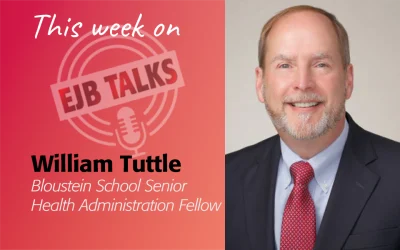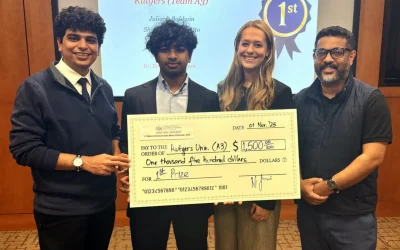News
Medicaid Work Requirements Set to Leave Millions Without Insurance
Cantor pointed out that state Medicaid agencies are feeling more stress than before, as offices are already low on resources for their current work without adding more paperwork each year, and more reach out to those who need to prove their employment.
Andrews: NJ race could shift climate, clean energy plans
“My sense of RGGI is that it is something that Republicans like to cut and Democrats like to keep. So, if she follows the historical pattern, then she would keep it,” Andrews said.
When the System Fails Its Smallest Patients
Between 2008 and 2022, U.S. hospitals closed nearly 30 percent of pediatric inpatient units. While those reductions are often framed as a response to declining admissions, they have an unintended cost, the loss of shared capacity that once sustained rare and complex care.
Listing candidates twice on NYC ballot is part of fusion voting
Any votes for a candidate, regardless of the party line the vote is cast under, counts toward that candidate’s total. “Although candidates may appear on more than one party’s line, voters can only vote for them once,” said Julia Sass Rubin, a Rutgers University public policy professor.
It’s Election Day: Here’s what to expect, from California to Virginia
“If Ciattarelli wins, it means that local New Jersey issues were prevalent because that’s how he’s running,” says Julia Sass Rubin, director of the public policy program at Rutgers-New Brunswick. If Ms. Sherrill wins, it would reflect “her success in making it a national race.”
EJB Talks: Lifelong Learning and Leadership in Healthcare
With nearly four decades of healthcare administrative experience, William Tuttle explains how his journey began with his decision to shift from medicine to hospital management. He talks about his 38 years with Baptist Memorial Hospital in Memphis, where he advanced through multiple roles from managing service departments to leading a rural hospital and later overseeing physician recruitment and large construction projects.
MHA Students win Seton Hall Case Study Challenge
The Bloustein School’s Master of Health Education team, whose members included Parth Shah, BHMS, MHA, CLSSGB, Julianna Baldwin and Sheno John, won the 2025 Hybrid Graduate Case Study Challenge hosted by Seton Hall University
NJSPL: Surveying Sentencing Reform in New Jersey
The New Jersey Sentencing Commission proposed a program to allow eligible incarcerated individuals to seek resentencing by demonstrating that they have been successfully rehabilitated. Researchers recently surveyed 1,529 New Jerseyans to better understand their support for or against four areas of prison sentencing reform, including examples of this rehabilitative sentencing program.
Addressing Cell Phone Use in Schools: A National Landscape of Policies and Practices
The purpose of this report is to provide data-driven findings to help inform the regulation of cellphone use in schools. This research was conducted from January to May 2025 by graduate students at the Edward J. Bloustein School of Planning and Public Policy at Rutgers University as part of a semester-long practicum led by Dr. Carl Van Horn, Director of the John J. Heldrich Center for Workforce Development.
N.J. gubernatorial hopefuls rely on a small slice of the state for cash
Julia Sass Rubin, the director of Rutgers University’s public policy program, said the trend is consistent with donations to nonpolitical nonprofits: fewer people making larger donations.
Rimshah Jawad (MPI ’26) Featured for National Student Parent Month
Rimshah notes that the student services staff at Bloustein— Dean Weston, Courtney, Greg, and Andrea— have been an incredible source of support. “From the very beginning, they welcomed me and guided me whenever I felt unsure. My advisor, Professor Clint, who invited me to his family picnic when he first met me with my kids, which meant so much. And my program director, Professor Jim Samuel, has always encouraged and appreciated me in ways that keep me motivated.”
How NJ’s top watchdog lost its bite amid conflicts and chaos
“There’s an expectation that when you have significant changes in a public organization, the public should be able to find out about it,” said Marc Pfeiffer, associate director of the Bloustein Local Center for Urban Policy Research at Rutgers University in New Brunswick.












